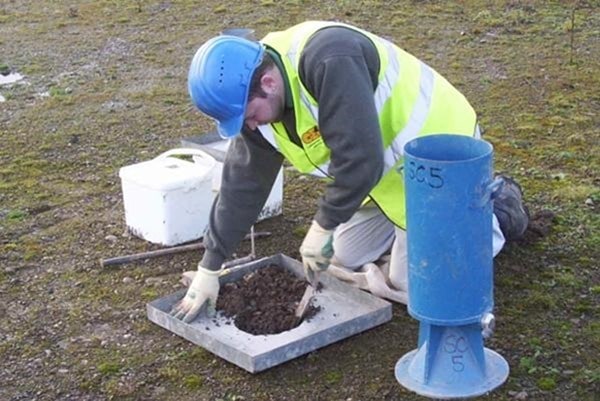1. Determine the soil type
The type of soil varies from one location to another. The first step of a home quality inspection is to check the characteristics of the ground soil on which the structure is built. The type of soil is a crucial aspect to consider as it determines the strength of the building. Some soils types will not be able to support a high-rise building. If the soil is not stable, the foundation of the building can be affected or even collapse.
Builders will often add sand to the foundation soil and to enhance stability. Clay rich soil and black cotton are not recommended as they have very low bearing capacity and high swelling & shrinkage characteristics. Sandy soil, Loamy soil, Chalky soil, etc. are good options for construction as they allow water to drain away from the site and at the same time will remain firm. It is ideal to get a soil test done with the help of a professional construction expert.
2. Check the structural design
The basic structural design of a building is another key aspect to consider while inspecting a house. The structure which includes wall, beams, columns and roof determines the stability and strength of a building. The design should be in such a way that it ensures maximum safety and rigidity to the building.
Assess whether the building is constructed to withstand earthquakes of a certain magnitude and other common environmental disasters. As a home-buyer, you may not be qualified enough to verify the structural quality of a building. So you can seek assistance from a qualified architect or construction engineer to evaluate the quality of the building structure.
3. Inspect the wall thickness
The thickness or width of the house walls must match with the measurements given in your property’s legal documents. Visit the construction site and inspect the walls physically with the help of a trusted architect. You can also check the quality by pressing against the wall or trying to insert a sharp object such as a key.
If the walls are not thick and rigid, then this will create a hole or crack. You can also tap against the wall using your knuckles to see if it is solid or hollow inside. If the wall develops any cracks easily or seems to be fragile then it means that the builder has not complied with good quality standards.
4. Check the plastering quality
While inspecting a home, you must check if there are any small cracks on wall plastering. This is one of the aspects that usually all home buyers tend to overlook. Some houses may have cracks in the corners or lower portion of the walls which may be hidden under a coat of paint. This aspect is especially important if you are buying an aged property.
The wall cracks may be an indication of poor quality plastering or even water leakage. Many builders try to deceive the buyers by using poor quality materials to construct a house or apartment. So as a buyer, you should not get duped by such offerings. Choose to buy property from a reliable builder with a good reputation as they will always use the best quality materials for construction.
5.Quality check of fitting & fixtures
Home-buyers should pay attention to the minute details while inspecting the construction quality of a home. Fittings and fixtures of a new home determine the level of comfort of the residents. So while you are at the house, go around and check if all switches and electric accessories used are of good quality and ensure smooth functioning. Also check if the kitchen and bathroom fittings such as taps, shower-heads, washbasin, drainage pipes, etc are in good condition.
You must inform the builder if you notice any kind of water leakage or other damages. Another important factor that you must check is the proper placement of doors and window panes. All joints must be fixed and lubricated well to avoid creaking noises while opening.
6. Assess the quality of the concrete mix
The strength of the concrete mix used in a construction determines the load-bearing capacity of a structure. Nowadays ready-mix concrete with optimum concrete-sand ratio is available in the market. Responsible builders will ensure that they use the best quality concrete mix for building homes. You can check the quality of concrete used for construction by driving a nail into the wall. If the nail gets inserted easily without any effort, then it means that the concrete quality is not up to the mark.
We hope that you found this construction quality checklist useful and informative. These tips will help you make an informed decision while buying a house. Now it’s your turn to choose a good builder in your locality and start looking for your dream abode. Learn how to verify a builder’s reputation before buying a flat.

